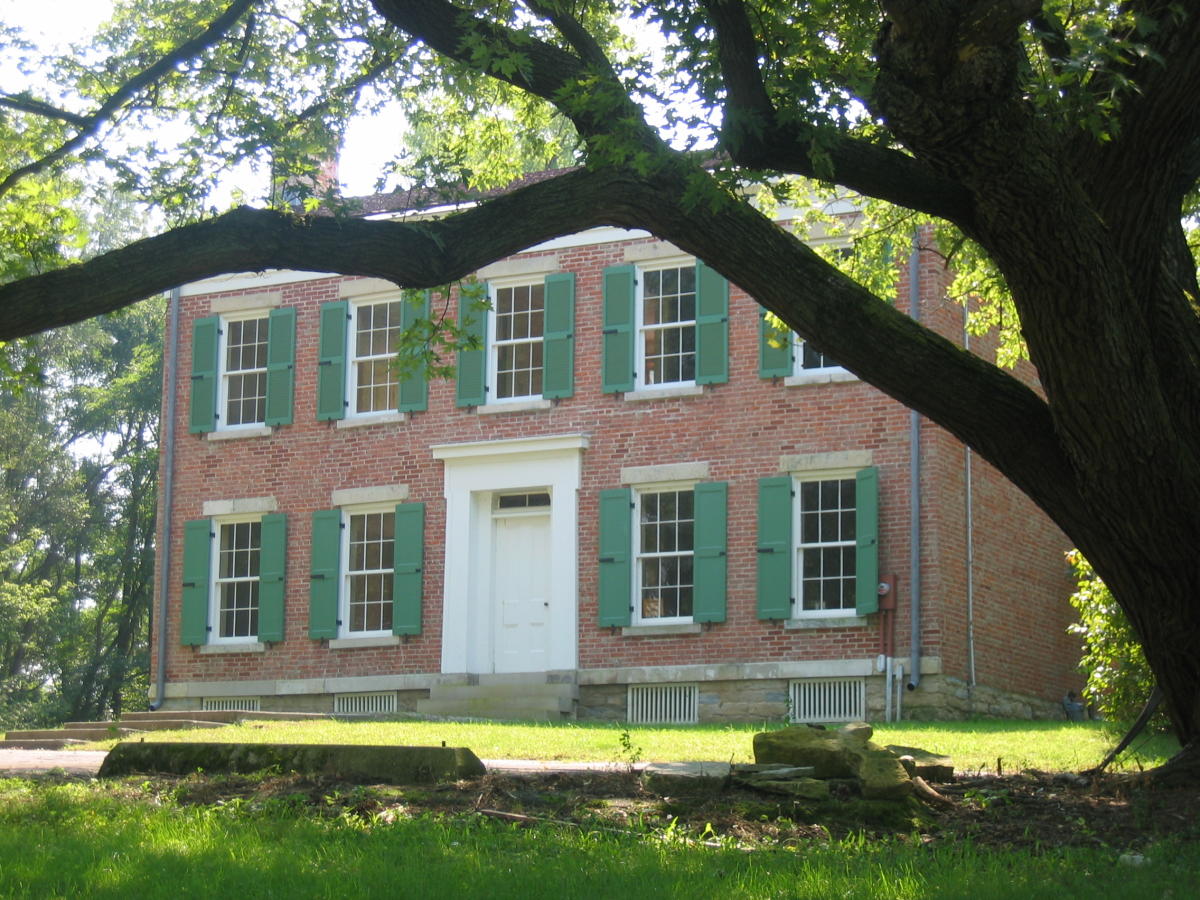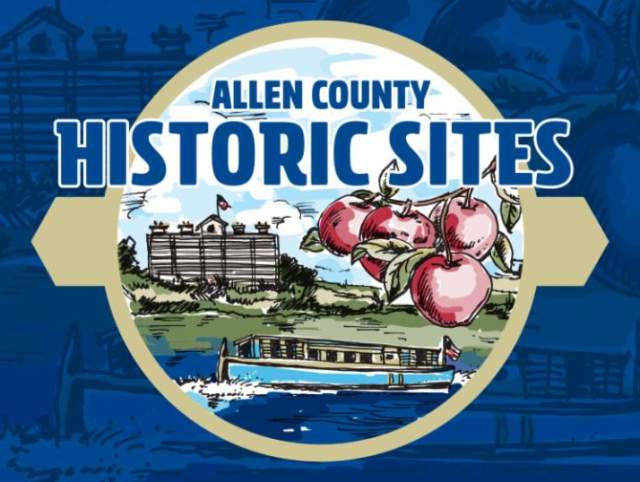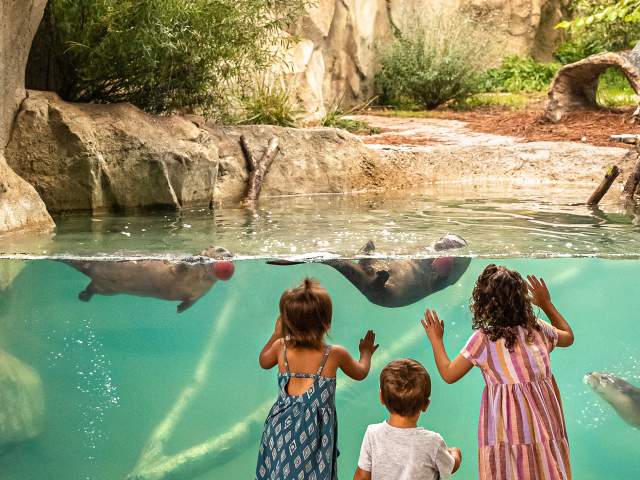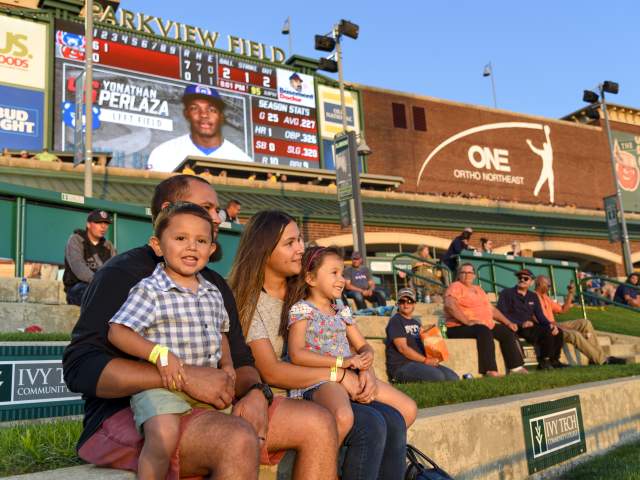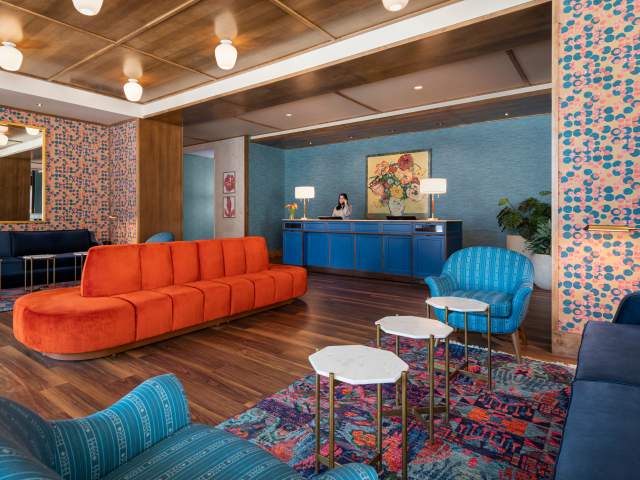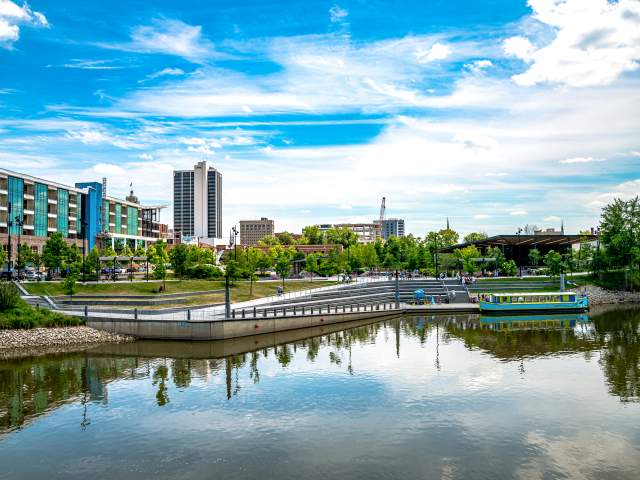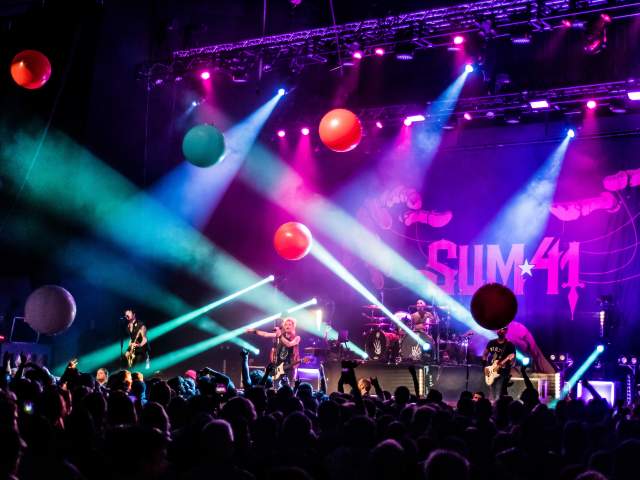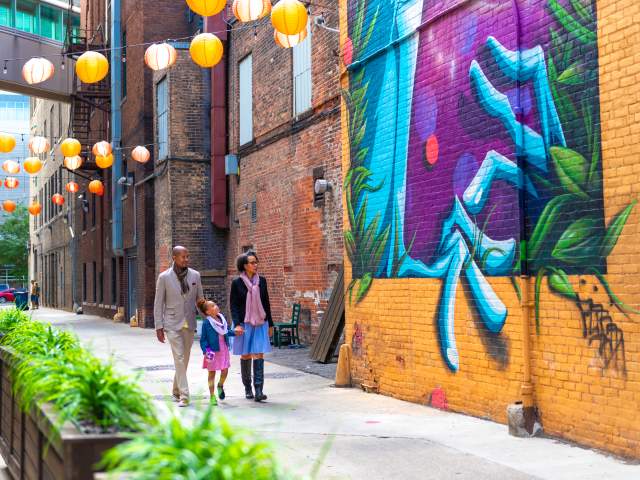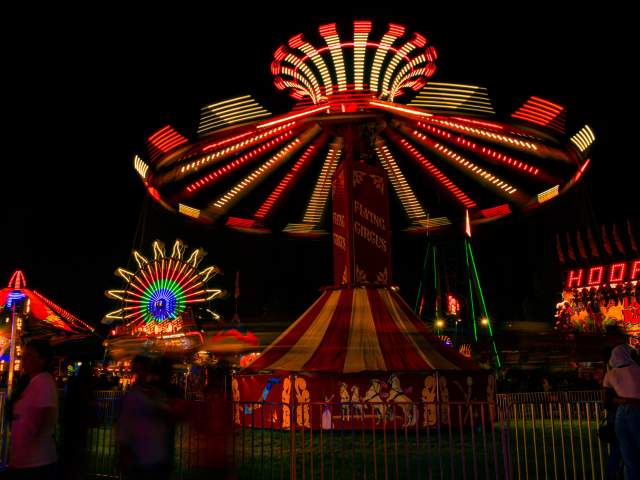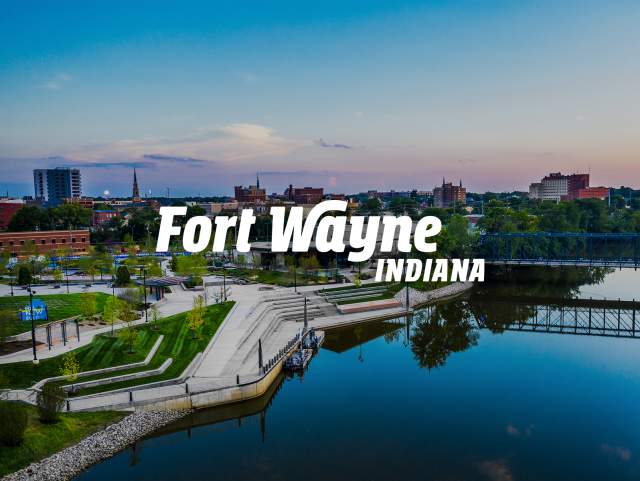With more than 200 years of history under its belt, Fort Wayne and Allen County has a rich and fascinating past for those who wish to explore it.
From its Miami heritage to its unique role in World War II to its modern growth, Allen County has become a melting pot of historic landmarks. One need only drive a few miles in any direction of Fort Wayne's historic downtown to catch a glimpse of some interesting historical finds, both well-known and more obscure. Plus, many of these locations are listed on the National Register of Historic Places.
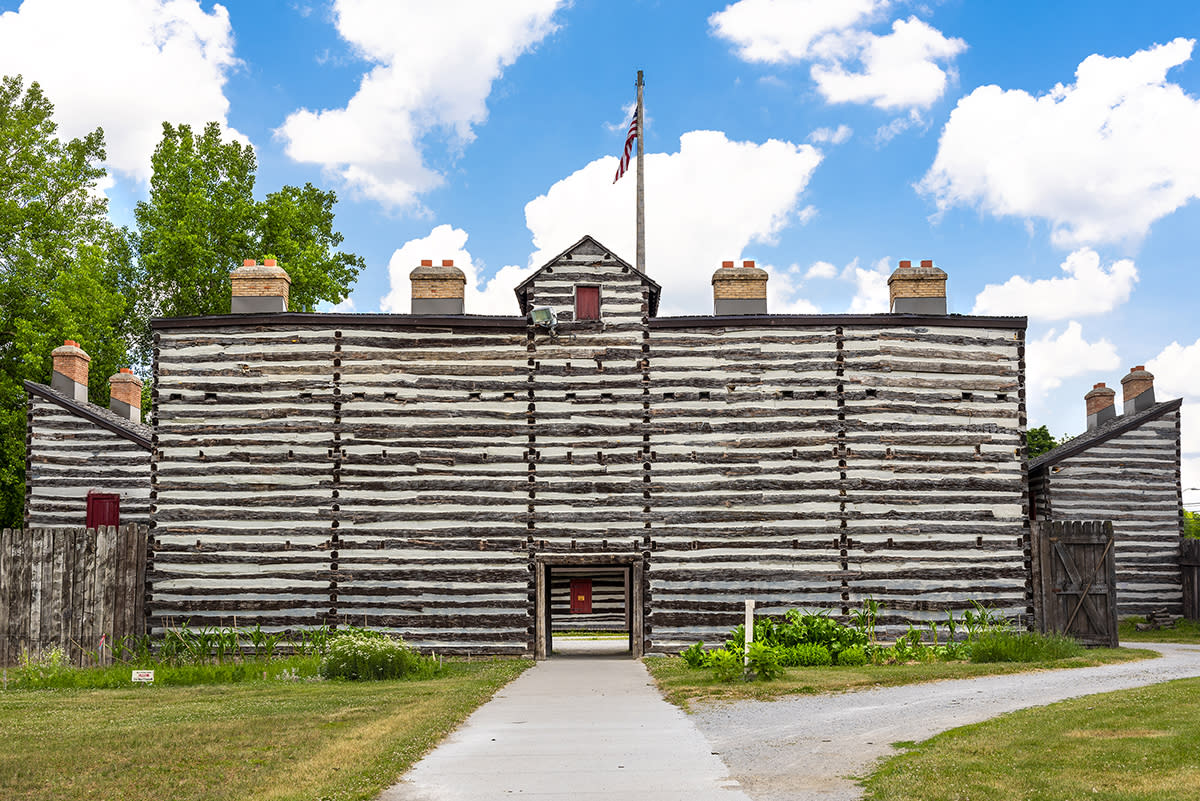
1. The Old Fort
The Old Fort would have to be the first stop on any historic Fort Wayne tour.
The Fort is a re-creation of the third and final Fort Wayne, located on Spy Run Avenue on the north edge of downtown Fort Wayne.
To see the actual location of the last two forts, one would have to stop at Fire Station 1 on Main Street, where all that remains is an old well and a commemorative plaque. The current Old Fort, however, frequently holds reenactments of soldiering and Colonial life typical of the early 1800s, when the fort was still in use.
2. Chief Richardville House
Nestled along the banks of the St. Mary’s river stands a stately brick mansion once owned by Jean Baptiste de Richardville. Chief Richardville was the nephew of the famous Miami war chief and the wealthiest Native American in Indiana, having accumulated his fortune in trading.
The house itself was built in 1827, financed in part by Richardville himself and partly by the U.S. government and was considered one of the finest homes in town. The property along Bluffton Road often hosts events to honor traditional Miami culture and heritage.
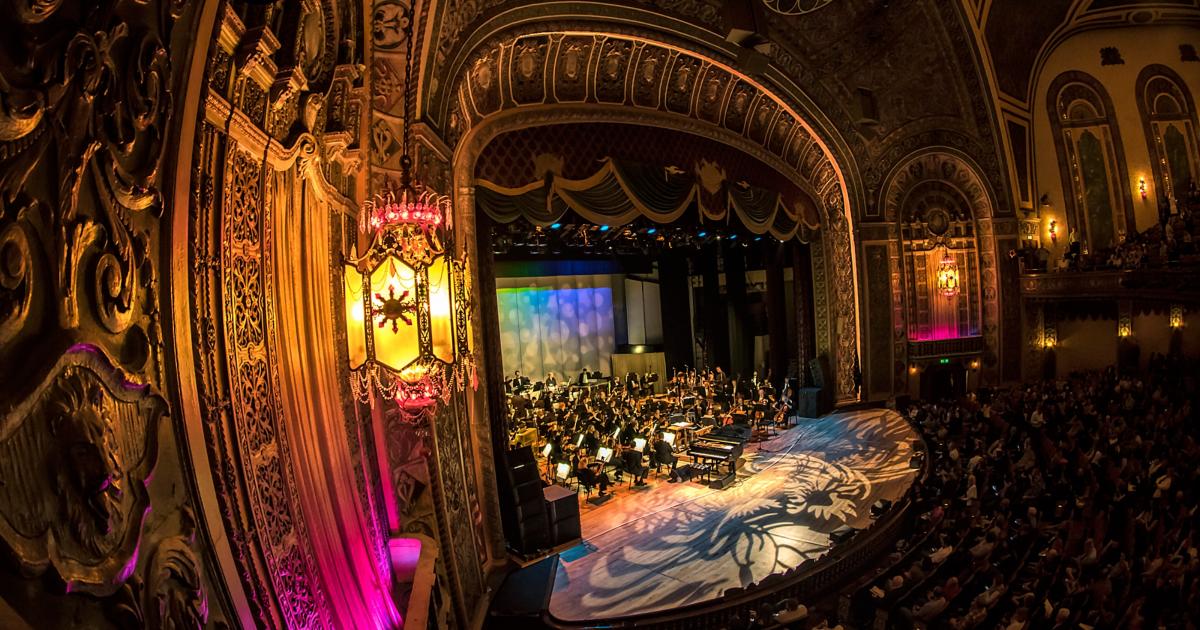
3. The Embassy Theatre
Once known as the Emboyd, the Embassy Theatre was Fort Wayne’s premiere entertainment house in the Vaudeville days, featuring many famous entertainers of the age.
Saved from demolition in 1972 by local efforts, it has been beautifully restored again. The theater is now a popular venue for concerts, Broadway musicals, ballet performances, and many other events, including the Festival of Trees at Christmastime.
The Embassy is still under constant updates to keep the aging structure in good condition and it is even rumored to be haunted.
Its greatest boast, however, is “Miss Page”, the impressive and rare Grande Page theater pipe organ, which has been carefully maintained through the years.
The Embassy Theatre is located on Jefferson Blvd in downtown Fort Wayne.
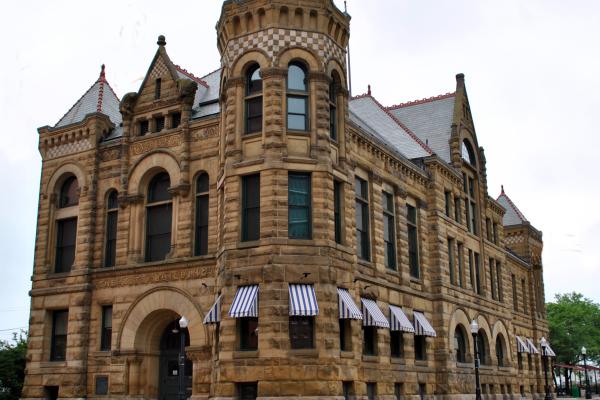
4. The History Center
Situated at the corner of Barr and Berry Streets stands a beautiful brown sandstone building that could be mistaken for a Tudor manor. Formerly the City Hall, the aptly-named History Center is a must-see for any history lover.
Aside from the wealth of artifacts and historic exhibits the museum offers, the building itself is a historic treasure. Built in 1893, the old City Hall once housed the courthouse and town jail, both of which can still be seen on a visit to the History Center with the basement jail left in its fully unrestored—and creepy—glory.
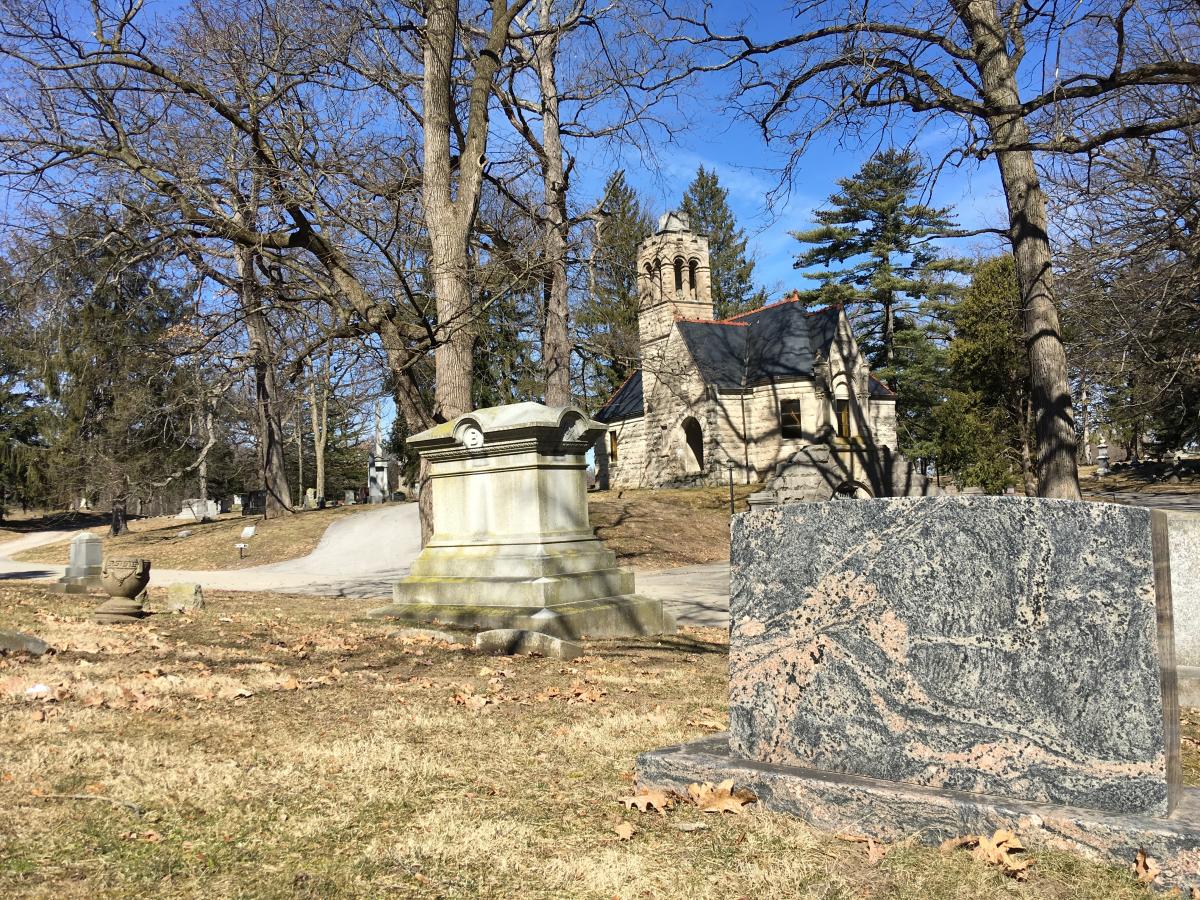 5. Lindenwood Cemetery
5. Lindenwood Cemetery
Fort Wayne’s oldest cemetery still in continuous use, Lindenwood, was once considered outside the city limits, but with the growth of the city, now resides comfortably in the heart of Fort Wayne, just behind the campus of the University of Saint Francis.
Morbidly beautiful, Lindenwood features many lovely stone pavilions and sunken gardens, and it has the somber feeling of walking among the remnants of an ancient stone city. Lindenwood’s acres of land and winding paths offer a peaceful place for a casual Sunday stroll or a lovely backdrop for photographers.
In addition, it also contains the gravestones of many of Fort Wayne’s famous forefathers and hundreds of Civil War veterans, along with memorials commemorating their sacrifice.
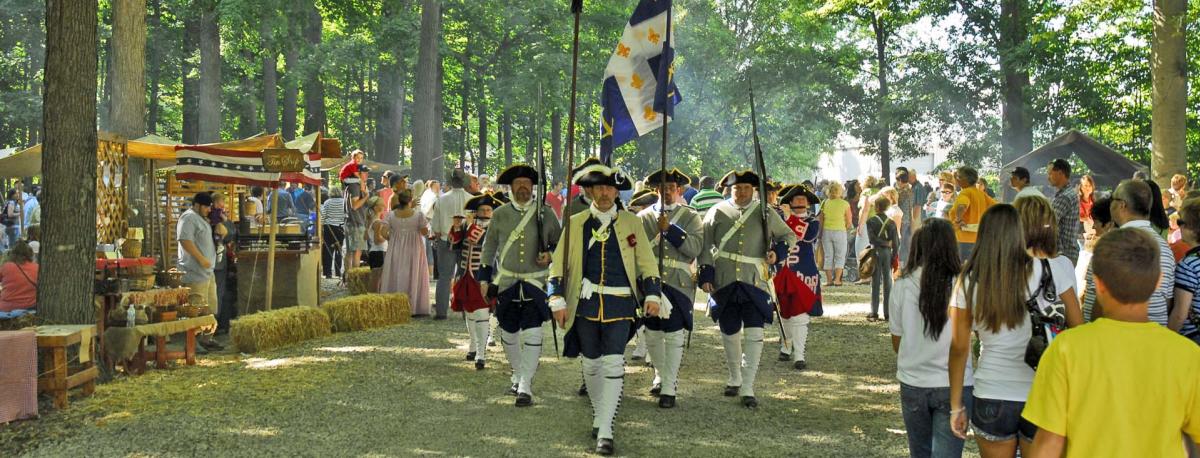 6. Johnny Appleseed Gravesite
6. Johnny Appleseed Gravesite
Many places throughout the Midwest lay some claim to the famous John Chapman (aka Johnny Appleseed), the man who traveled the area barefoot, planting apple trees along the way. Not only does Fort Wayne have a baseball team named in his honor (the High-A TinCaps), but it also boasts his final resting place.
Situated near the Allen County War Memorial Coliseum just off Parnell Avenue is the gently-rolling landscape of Johnny Appleseed Park. While it may be best known for it famous Johnny Appleseed Festival in the fall, the park is home to the grave of the well-known pioneer, enclosed in a wrought-iron fence atop the highest hill in the park. The park itself spans several acres and is pleasantly shaded and walkable, nestled along the St. Joseph River. It is also a popular place to hop on the Rivergreenway to bike, rollerblade, or even take a stroll along some of the prettiest stretch of the trail.
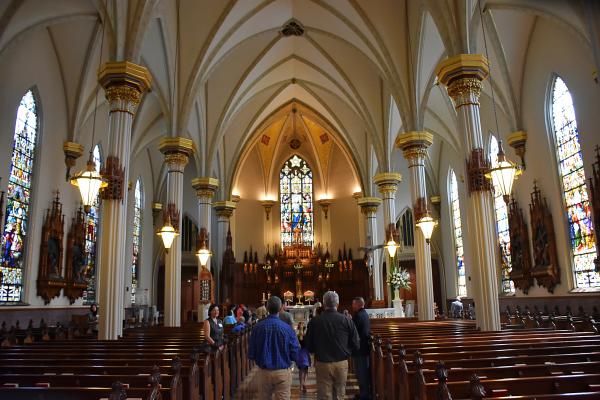
7. The Cathedral of the Immaculate Conception
The Cathedral, which was built on the site of the first Catholic church in Fort Wayne (St. Augustine’s), is easily recognizable with its white limestone façade and twin spires rising above Calhoun Street.
Completed in 1860, the church has been used continuously since its dedication and has seen several renovations. The interior is even more impressive than the exterior, with high, Gothic columns, elegantly carved wooden altarpieces, and beautifully crafted stained-glass windows depicting scenes of the church’s patroness, Mary, the mother of Jesus.
Beneath the church lies a marble-adorned crypt where many of the diocese’s previous bishops are interred.
Tours are available through the Cathedral office, (260) 424-1485. There is also a small museum in the basement of the Noll Center on Clinton Street that houses additional relics and displays. Admission is free.
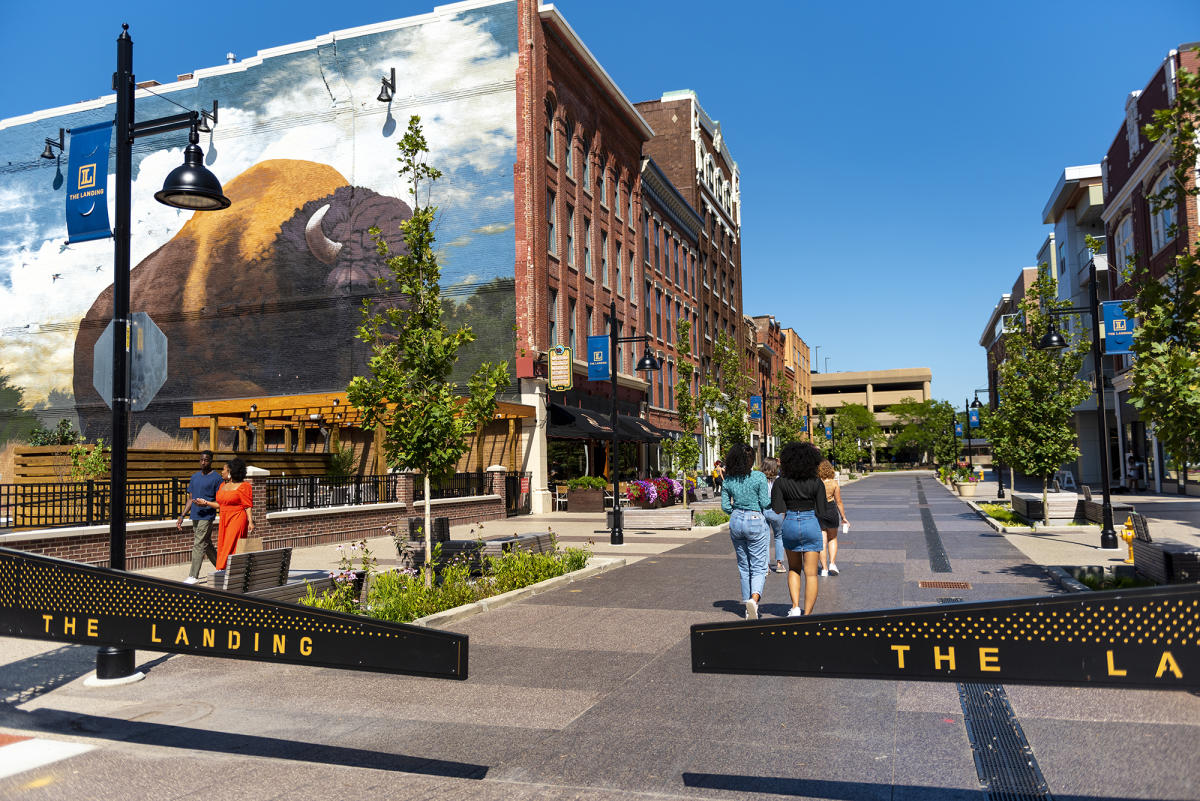 8. The Landing
8. The Landing
Fort Wayne’s geographic location was undeniably important to its early growth, and its junction of three rivers made it an ideal place to extend the Wabash-Erie Canal.
Columbia Street is often referred to as “The Landing”, and with good reason, as it was the landing area for canal barges in Fort Wayne. Though the canals have long been filled in, there are several areas where one can still see the remains of where it once flowed.
Some of the buildings along Columbia Street are historic and the narrow, close streets give it a vintage vibe as if it remained behind in the canal era. Revitalized as a pedestrian walking street in 2020, The Landing thrives as an entertainment district offering dining, shopping, residential, and rentable spaces, often filled with live music on summer weekends.
Farther west down Main Street just outside of downtown is a couple of small hills that were part of the canal system, along with a plaque commemorating its groundbreaking.
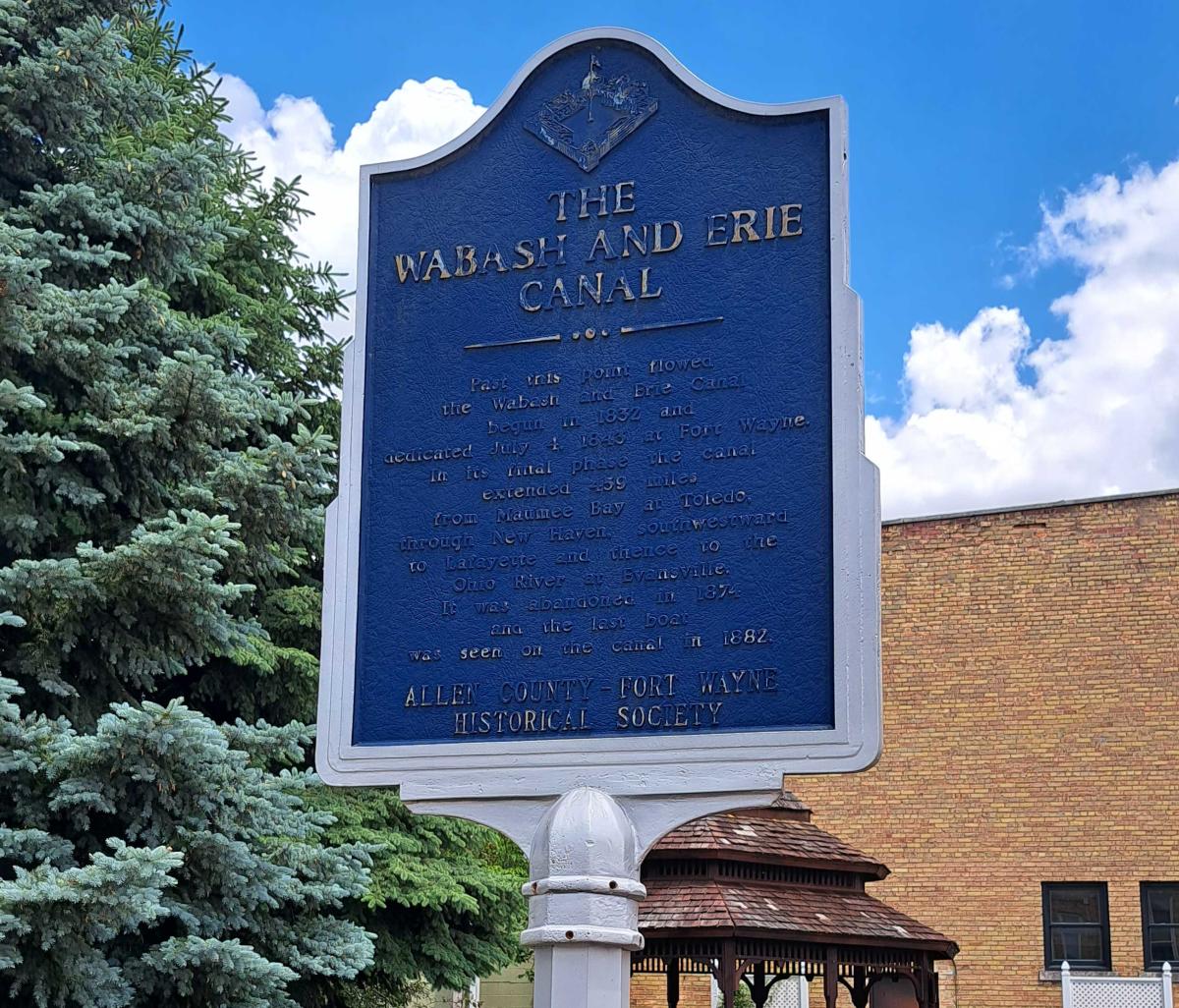 9. New Haven Canal Landing Park
9. New Haven Canal Landing Park
For another nod to the importance of Allen County's canal routes, make a stop in New Haven at New Haven Canal Landing Park found at 425 Broadway St, New Haven, IN 46774. Directly across the street from the old City Hall building, built in 1913, this commemorate parklet marks the sport where 200 years ago, you could have stepped off a canal boat, after having traveled straight from Toledo or Evansville, a total of 468 miles at a time when paved roads didn't exist.
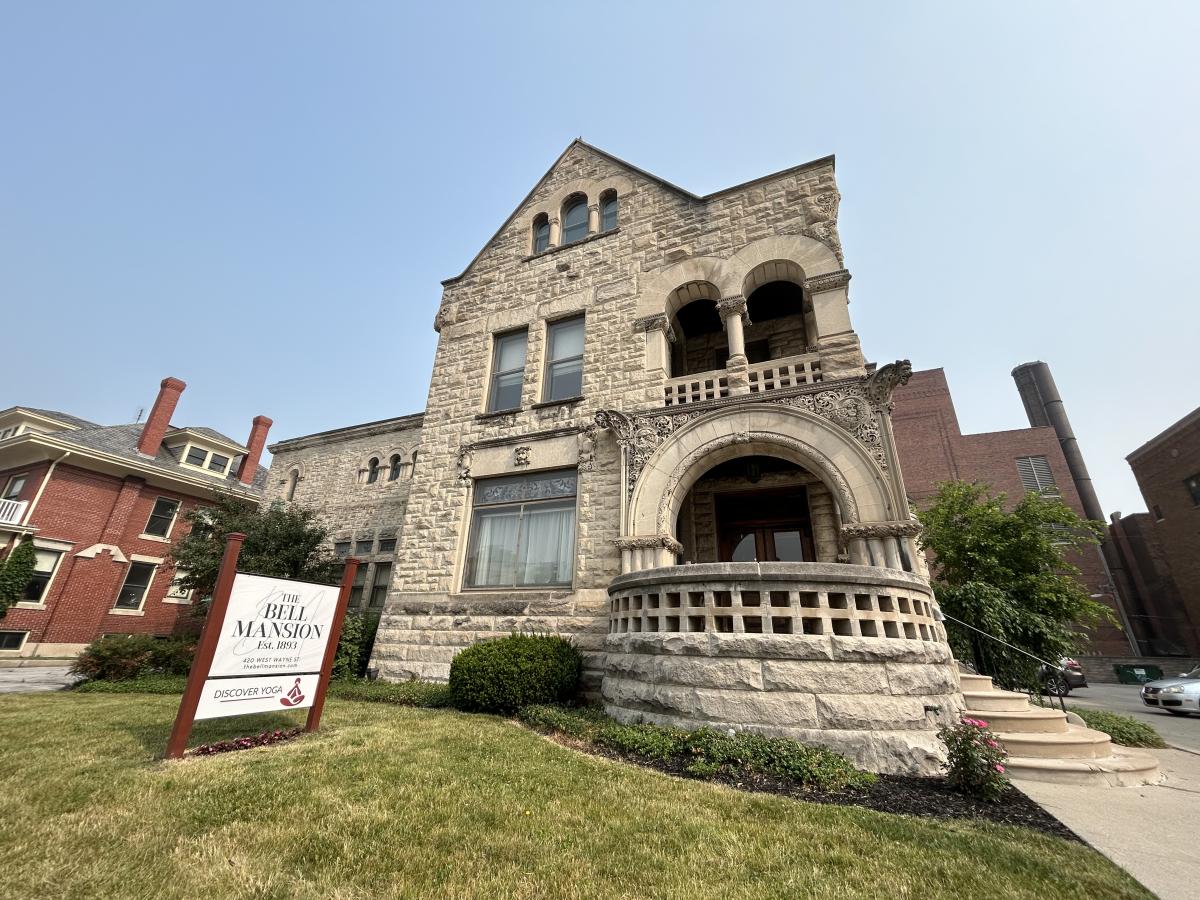 10. Bell Mansion
10. Bell Mansion
Robert C. Bell, a prominent attorney, served Indiana's General Assembly from 1874 through 1886. The Bell Mansion was built in 1884, and is now on the National Register of Historic Places. His wife Clara Wolf Bell helped found the Fort Wayne Museum of Art. The home of Judge Lindley and Beulah Ninde was once next door and had important ties to the Underground Railroad. The residence of Robert C. Bell was built in 1884. The stone used for the exterior of the residence is native Indiana limestone.
Boasting more than 14,000 sq ft, the structure is now an event venue hosting weddings, special events, and offers guided weekly tours (and ghost tours!).
This post was originally published in May 2018 and has been updated.
